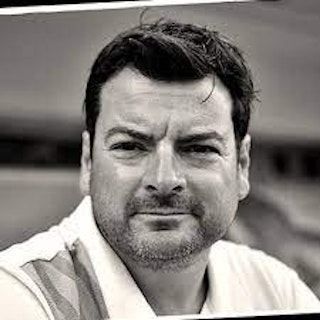What does it take to make it as a health marketing agency?
There has always been good money in selling good health, but as populations age and marketing becomes increasingly fragmented, the perception is that health marketing is a cash cow. We look at why and how agencies are making health the right choice.

Is health and pharma marketing an easy choice for agencies?
This article initially set out to ask why so many marketing agencies choose to focus on the healthcare and pharmaceutical sectors. But considering that the global pharma industry alone is worth as much as $10tn a year, perhaps a better question would be why don’t all marketing agencies focus on building a health marketing offer?
Health and pharma has long been the richest industry on the planet. Think about it: companies have to sell a lot of pills, plasters and procedures to keep modern human beings alive for 75+ years. All the major agency networks have well-established health offers (think Havas Health, Ogilvy Health, Saatchi & Saatchi Wellness, McCann Health, Publicis Health). Over the last decade, many smaller agencies have followed suit.
Iris Worldwide identified health as a key growth driver a decade ago and has enjoyed success with clients such as Alcon and Convatec. The agency recently invested in a raft of senior health specialists to strengthen its health offer, raiding Resonant, McCann Health and VCCP Health to bring in Marie Little as health MD, Avril Furness as creative director and Harriet Masters as project director.
“The first reason agencies go into health and pharma is that it is viewed as being recession-proof,” says Little. “Everyone will need some form of healthcare at some point, so the need for companies focused on finding healthcare solutions is ever present, and growing as the population ages. Therefore the need to market these brands will always exist. Plus many are high-cost/high-margin brands, so budgets are likely to be high.”
The second reason many agencies pursue health, says Little, is a desire to do things differently: “Healthcare marketing is often said to lag behind consumer practices. This creates opportunities for agencies born out of the consumer space to bring more progressive, customer-centric approaches to healthcare brands. Our health business initially grew through referrals and, a couple of years ago, we decided to invest in our health offering to help raise awareness of the great work we do in this sector. It’s now one of our key global growth drivers.”
BBD Perfect Storm has worked in health marketing since its launch in 2013, with clients such as Roche, Pfizer, Bupa, GSK, Smith & Nephew and Johnson & Johnson.
“Standalone health divisions are commonly set up because of the specific needs in that space, and health and pharma can typically be a combination of B2C and B2B work,” says managing partner Nick Dutnall. We often call it B2B2C because when a client targets a healthcare professional with a message, they also need to give the right narrative to the healthcare professional for them to pass on to the patient in their care. Not closing the loop this way is only doing half the job.”
So, what does it take to be a hit in health marketing? It’s a specialist area, so what does an agency need in order to win health clients and create work that delivers results?
In May, the agency Atomic launched its own health division, Atomic Matter, hiring BBH’s former health division leaders Natalie Enniks and Paul Foster as MD and ECD to work alongside strategic head Frankie Everson. At BBH, Ennicks and Foster built a team of 70 health specialists and one imagines they have the same, if not bigger, ambitions at Atomic Matter.
“It’s 100% about having the right people with the right expertise,” says Enniks. “We firmly believe that our competitiveness lies in the caliber and cohesion of our people. Specifically, cultivating the perfect mix of healthcare specialists and industry ’outsiders’ to help keep the work fresh. Many agencies specialize specifically in health and pharma marketing, but what the sector is crying out for is work that is more human, more creative and better connected to real people across the whole customer journey,” she adds.
Dutnall’s motivation at BBD Perfect Storm has always been to bring the best strategic and creative minds into the rich, emotional world of healthcare, which is something he feels hasn’t necessarily always been the case in previous roles.
He says: “I have felt that health work was often not afforded the same strategic and creative excellence as other sectors, which to me just felt wrong. Healthcare communications really have the potential to change lives and yet, more often than not, the process taken felt, well, just like a process. We take a ‘human first’ approach to our health work. Seeing our audience as people, not just professionals. Just like healthcare, it’s the understanding that things aren’t always predictable and comfortable, but we believe that tension creates more dynamic and, therefore, more effective work.
Iris’s health MD Little concurs, saying witnessing different attitudes between consumer and health marketing has been interesting: “Healthcare brands that are open to a different way are really benefiting. We gained traction by staying true to our belief that brands don’t influence people; people do. People-powered participation is key. Rational marketing that taps into features and benefits is the route healthcare brands – and their large agencies – often take, but the way ideas travel has changed. The difference between us and the large networks is how we work at Iris. Our consulting, data, performance media, strategy, pricing, social, creative, production and healthcare specialists literally all sit together. We collaborate constantly and assemble Avengers locally and globally as needed. This means all our clients get a truly integrated service we are all invested in.”
So, the reasons to launch a dedicated health offer are clear, but what are the challenges of entering such a highly competitive sector?
“Our biggest challenge centers around a client’s appetite for change and transformation,” says Dutnall. “Those who are happy with the usual healthcare marketing approach can initially feel daunted by a partner who is keen to challenge established conventions and serve up work worthy of, well, non-health brands. But, the way we work is human first, too, and as relationships are built, trust is established and it’s clear that we don’t challenge just for the sake of it. As clients see the positive results of what we’ve done together, they soon want to push the boundaries as much as we do.”
Little says the challenge for them has been around how health sector clients use data and how often marketing and sales aren’t always aligned. “Often, we’re brought in to help embed the principles of data-driven marketing throughout the client company because although this may be the ethos, it doesn’t really happen,” she says. “Once they are aware of what’s possible with the data they have and how it can make their marketing so much more effective, we’re off to the races.”
Naturally, the health sector is heavily regulated. While that can often be a ‘creativity killer,’ Little says that’s not the case at Iris: “We don’t see it [regulation] as a barrier or hindrance at all – it’s just part of the brief. So many health brands get lost in the sea of sameness because people are terrified of doing things differently – this is an exciting challenge for us! Be different, stand out, stand for something, participate – or why bother?
So, the plethora of agencies piling into health marketing could make one perceive it’s easy money, but as Enniks says, that is certainly not the case: “It’s wrong to think of pharma as a cash cow. Typically, we’re working on a global launch of a new therapy that has been in the making for years with extensive R&D before getting to a stage where an agency is on board. The need is, therefore, very different from the launch of a consumer brand, which is often about the development of a new but transient campaign. We’re working on pre-launch and launch strategies; we’re creating brands from scratch; we’re helping to raise awareness of certain diseases or educating on new science; and a lot of that needs to happen before you even start communicating about a new brand launch. So, yes, there can be a lot of marketing spend in pharma, but that’s because there’s a lot of work that needs to be done.”
